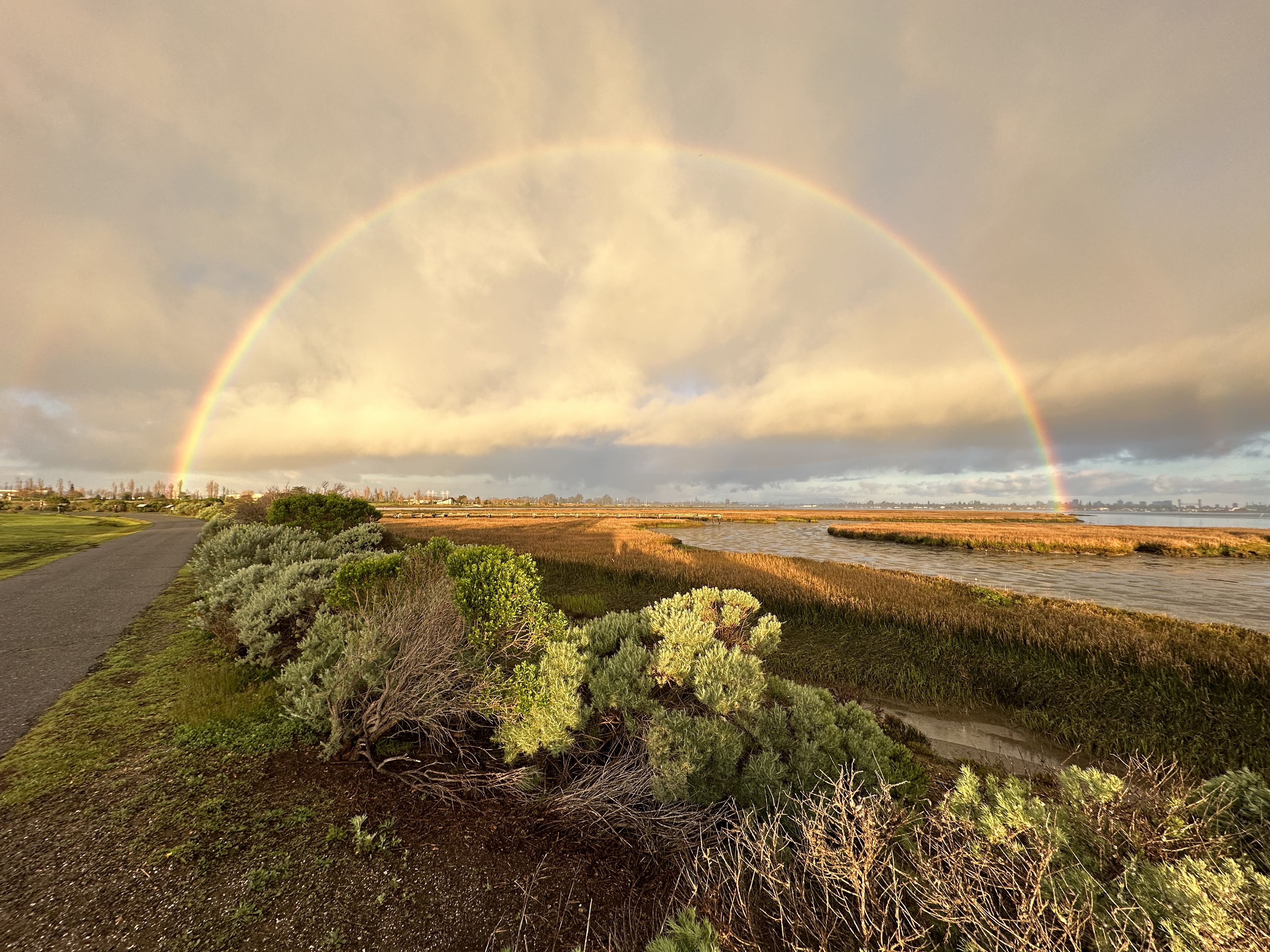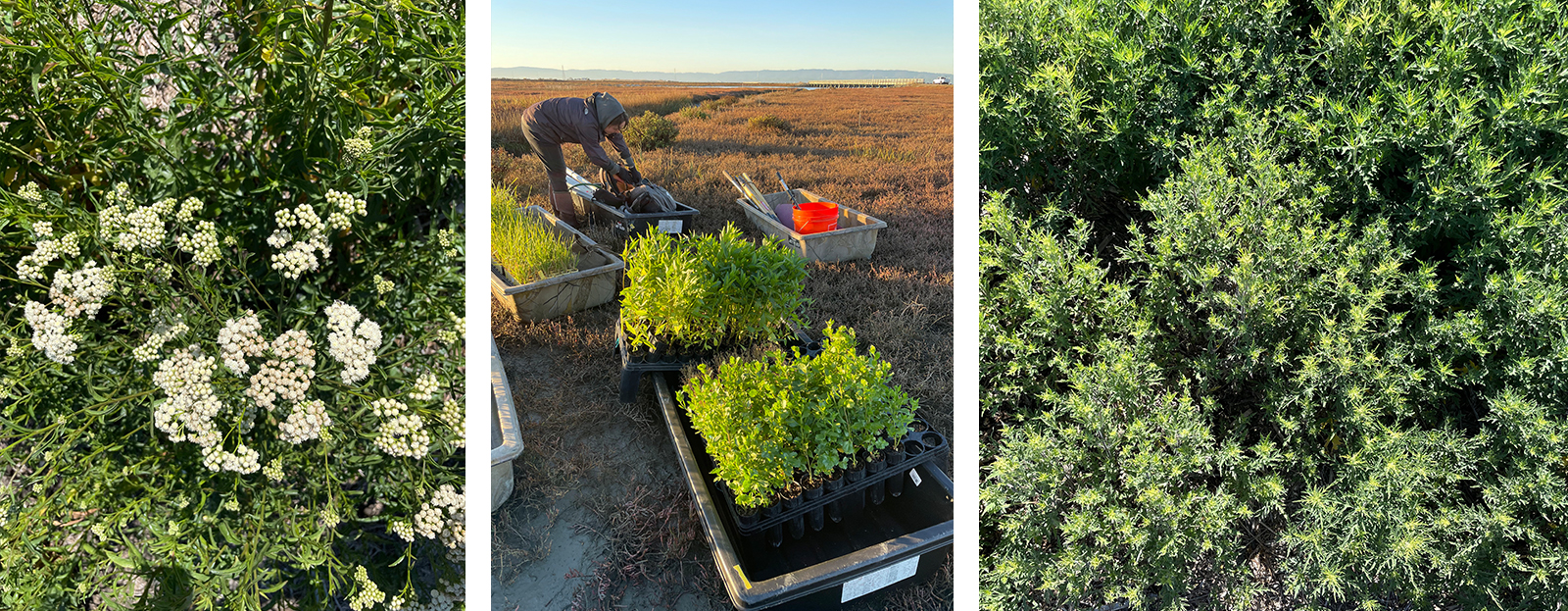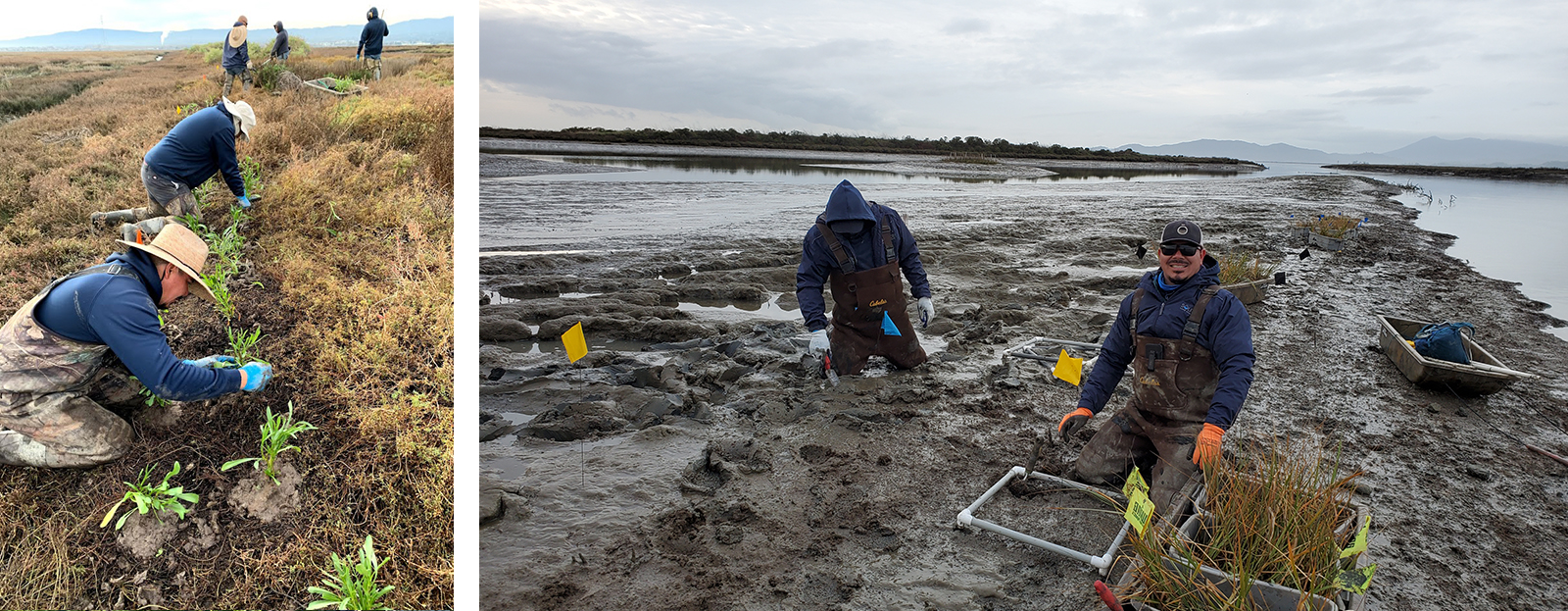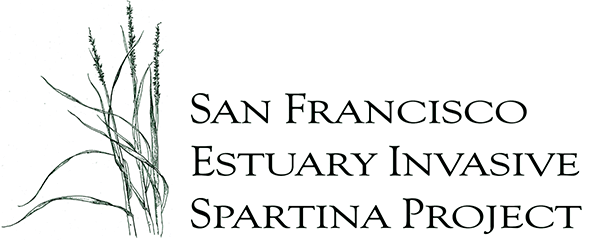
The San Francisco Estuary Invasive Spartina Project (ISP) works toward the eradication of invasive Spartina (cordgrass), protecting native tidal marshes and mudflats across the 70,000-acre project area in San Francisco Bay.
This year’s unusually wet winter caused some great benefits such as a “super bloom” of wildflowers in several parts of the state and improved spawning opportunities for anadromous fish in the mountain streams. Here in the Bay, we saw heavy freshwater influx to our tidal ecosystems. After the wet winter of 2017, we saw an increase in native tidal marsh plants and invasive Spartina, but it’s too early to tell if that will be the case this year.
With more than 15 years of experience working in the Bay’s marshlands, our project partners continue to be responsive and flexible as we work together to strengthen native tidal wetlands in SF Bay that provide valuable green infrastructure. Read on for project highlights from January-June 2023.
Treatment and Restoration:
Thanks to the rain that pummeled the Bay in early 2023, ISP project managers expect to see an increase in tidal marsh vegetation throughout the estuary, including possibly a bump in net cover of the invasive hybrid Spartina alterniflora. Crews on the restoration team expect to see higher survivorship of the native plantings, with much less manual irrigation needed for seedlings this year compared to previous years. The rain will also help lower estuarine salinity levels, so we expect the more hospitable conditions to support improved recruitment of marsh natives, including seedlings of marsh gumplant and coyote bush.
In 2022, ISP staff inventoried 41,400 acres (59%) of the project area and detected 20.7 acres of invasive Spartina. This reflects a 97.4% reduction from peak levels in 2005, and an 8.1% reduction from 2021 levels. Of the remaining invasive Spartina in the estuary, 17.9 acres (87%), all hybrid S. alterniflora, is located within the six areas of central San Francisco Bay where treatment restrictions have been in place since 2011, due to concerns over the endangered California Ridgway’s rail. The State Coastal Conservancy and US Fish and Wildlife are consulting on a new Biological Opinion that considers starting a careful phased approach to initiating treatment and revegetation at these sites.
In Hayward, ISP teams have been working proactively with East Bay Regional Parks to preclude the spread of invasive Spartina into planned restoration sites, such as the Hayward Marsh Restoration Project. As landowners and agencies are considering restoration designs that open up tidal action to nearby sites occupied by invasive Spartina, we encourage site managers to work proactively with the ISP team to plan carefully in order to help stop the spread of invasive Spartina. For consultation on your restoration site planning, please contact us at info@spartina.org.

Monitoring:
One of the many reasons that the ISP team works to protect these tidal marshes is to provide habitat for sensitive species, including the endangered California Ridgway’s rail. This year’s rainy winter may benefit the rails with increased vegetative growth of marsh plants that provide cover for nesting, roosting, and protection from predators. Despite the wet and windy weather, ISP managed to conduct call count surveys for Ridgway’s rails at over 60 transects this season. Rail numbers continue to increase at several recent restoration sites, such as Pond B3 at the Bair Island Restoration Project in San Mateo and North Creek Marsh in the Eden Landing Ecological Reserve near Hayward.
Find the 2022 Ridgway’s rail report online here.
Featured Partner: SOLitude Lake Management
This project is made possible by working with a network of partners, including individuals, contractors, agencies, and community groups. This issue, we’re highlighting our partner SOLitude Lake Management, LLC. With 50+ years of experience, this nationwide management company has been one of our main contractors supporting the treatment and restoration programs since these programs were initiated. The dedicated and extremely hard-working SOLitude crew works with ISP biologists from Olofson Environmental and landowners during all seasons, including providing air boat support during hybrid S. alterniflora inventory, conducting invasive Spartina treatment at many sites around the Bay, and planting and maintaining natives. Their airboat is critical for helping the team access remote sites at low tides.

Outreach:
On May 18, Tobias Rohmer (ISP Monitoring Program Manager) and Lindsay Faye Domecus (ISP Environmental Biologist), both with Olofson Environmental, gave a well-received presentation on the Invasive Spartina Project to the Golden Gate Audubon Society (GGAS). A recording is available on the GGAS website to view for a limited time.
Thank you!
